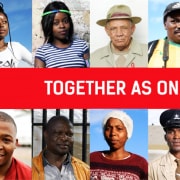|
Getting your Trinity Audio player ready...
|
This four-part series on corruption, criminal justice and legitimacy was first published on the CDA Perspectives blog – this is a platform for people working in the fields of humanitarian assistance, peace practice, sustainable development and corporate operations in contexts of conflict and fragility. The blog provides an outlet for these professionals to discuss accountability and feedback, conflict sensitivity, peacebuilding effectiveness, and responsible business operations.
The series is part of the blog’s ongoing discussion on corruption in fragile states. Read part one, titled Common approaches to understanding and combating corruption, of this series below.
Corruption is a complex, dynamic, and often contradictory phenomenon. It is hidden yet widely acknowledged, harmful yet at times beneficial, where a victim today can be a perpetrator or beneficiary tomorrow. It distorts the rule of law, keeps essential basic services out of reach of the poor, exacerbates grievances, and buttresses illicit power structures within the state apparatus, all the more so in fragile and conflict-affected states.
The international community has made combating corruption a global priority in Sustainable Development Goal (SDG) 16, which is dedicated to the promotion of peaceful and inclusive societies for sustainable development, the provision of access to justice for all, and building effective, accountable institutions at all levels. A key element of this SDG is to substantially reduce corruption and bribery in all its forms.
Despite the significant investment made by international donors to combat corruption through development assistance, there is sparse evidence that their current strategies are effective. Evaluations of this assistance are not consistently of high quality, making it difficult to draw conclusions with confidence. Even where evaluations and research are sufficiently robust, the evidence of effectiveness is mixed at best. In fact, there is strong evidence of the ineffectiveness of some very popular interventions—such as creating anti-corruption authorities, civil service reform, and aid conditionality.
The emergence of research showing anti-corruption efforts actually increasing corruption is of even greater concern.
As the first in a short series of posts, we will share lessons from the Corruption, Justice, and Legitimacy (CJL) project, about current approaches to understanding corruption, how international donors combat corruption, and weaknesses in their operative logic.
The CJL project advances innovate approaches to corruption analysis in fragile and conflict-affected contexts and supports holistic efforts to diminish corruption in core state activities related to human security. It is a Carnegie Corporation funded research project, housed within the Institute for Human Security at The Fletcher School of Law and Diplomacy, Tufts University.
What are the current approaches to understanding corruption?
Two theoretical models dominate the anti-corruption field’s thinking about how corruption happens and how it can be addressed: principal-agent and collective action.
Principal-agent
In this model, corruption is seen as a breakdown of the principal-agent relationship. The “principal” delegates an “agent” with tasks and the responsibility of ensuring others comply with regulations. This agent is empowered to make decisions on the principal’s behalf. This is the basis on which all governments function.
Problems arise when the principal’s interests differ from those of the agent. As agents have more information than the principal about their tasks and transactions, they can choose not to disclose key information to the principal. Without this information, the principal has limited ability to control what the agents do.
According to this model, corruption arises when agents have the opportunity to make use of asymmetric information, and pursue their private interests at the expense of the principal’s interests (and, by extension, the public good). This assumes however that the principal’s interest is in the public good. In situations where the principal’s interest is for personal benefit, then the model falls apart.
Collective action
This model is based on the idea that non-corrupt behaviour is in the group’s collective interest. However, in fragile and conflict-affected states, people often participate in corruption because they believe others do and that if they act in a non-corrupt manner they would lose out. In such societies, termed particularistic societies, corruption is not an exception to a norm of integrity and equal treatment, but is the norm itself.
How are international donors combating corruption?
In a review of anti-corruption programming we found that the majority of programmes that combat corruption with foreign aid are based, implicitly or explicitly, on the “principal-agent” theory. Despite the common refrain found in the development community that context matters, this (often implicit) theory of corruption is used across, and regardless of differences in, contexts, stakeholders, and types of corruption.
In our review of corruption programme designs, we identified two broad approaches that focus on different parts of the chain linking principals and agents:
Bureaucratic principal-agent programmes
These programmes seek to change individual transactions within governments, where elected officials and senior bureaucrats are the principals and civil servants the agents. All of these programmes seek to reinforce a (potentially false) model of the principal-agent relationship, which assumes that the public interest lies at the heart of every principal’s actions.
Examples of these programmes are: civil servant capacity-building programmes that seek to develop better disciplinary procedures, merit-based promotion systems, or secondment of international mentors to departments.
“Citizen” principal-agent programmes
These programmes were often inspired implicitly or explicitly by theories around collective action, but in practice are a variation on a principal-agent approach. In these cases, the principal is not an elected official or bureaucrat, but citizens or representative NGOs attempting to hold authorities accountable. Elected officials essentially become agents who are meant to take decisions on behalf of the people.
These programmes typically include: advocacy campaigns demanding action from their elected officials, education and public awareness raising, media campaigns, non-violent resistance or electoral processes.
These classic principal-agent responses are argued to be ineffective, because they hinge on the assumption that there is political will to enact change. For instance, in order for increased accountability to reduce corrupt behaviour, enforcing the rules in a fair manner must be in the principal’s interest.
In the next post in this series we will unpack the mismatch between corruption and anti-corruption programming.
• Scharbatke-Church is the principal of Besa: Catalyzing Strategic Change, a social enterprise that seeks to catalyse strategic change in places experiencing conflict and structural or overt physical violence. She has significant experience working on anti-corruption and state legitimacy in the DRC and Uganda.
• Image from Big Think








